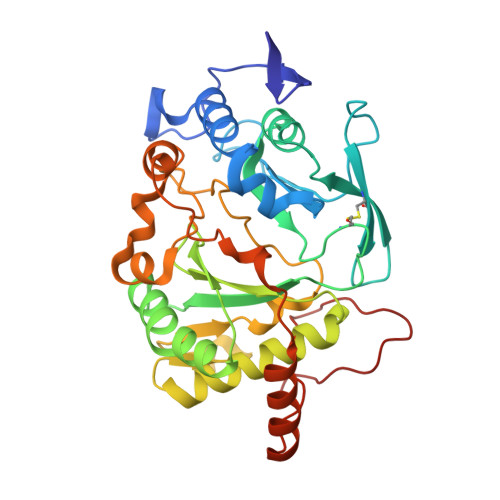DNA Ligase C and Prim-PolC participate in base excision repair in mycobacteria.
Pocinski, P., Brissett, N.C., Bianchi, J., Brzostek, A., Korycka-Machaa, M., Dziembowski, A., Dziadek, J., Doherty, A.J.(2017) Nat Commun 8: 1251-1251
- PubMed: 29089537
- DOI: https://doi.org/10.1038/s41467-017-01365-y
- Primary Citation of Related Structures:
5OP0 - PubMed Abstract:
Prokaryotic Ligase D is a conserved DNA repair apparatus processing DNA double-strand breaks in stationary phase. An orthologous Ligase C (LigC) complex also co-exists in many bacterial species but its function is unknown. Here we show that the LigC complex interacts with core BER enzymes in vivo and demonstrate that together these factors constitute an excision repair apparatus capable of repairing damaged bases and abasic sites. The polymerase component, which contains a conserved C-terminal structural loop, preferentially binds to and fills-in short gapped DNA intermediates with RNA and LigC ligates the resulting nicks to complete repair. Components of the LigC complex, like LigD, are expressed upon entry into stationary phase and cells lacking either of these pathways exhibit increased sensitivity to oxidising genotoxins. Together, these findings establish that the LigC complex is directly involved in an excision repair pathway(s) that repairs DNA damage with ribonucleotides during stationary phase.
Organizational Affiliation:
Genome Damage and Stability Centre, School of Life Sciences, University of Sussex, Brighton, BN1 9RQ, UK.














